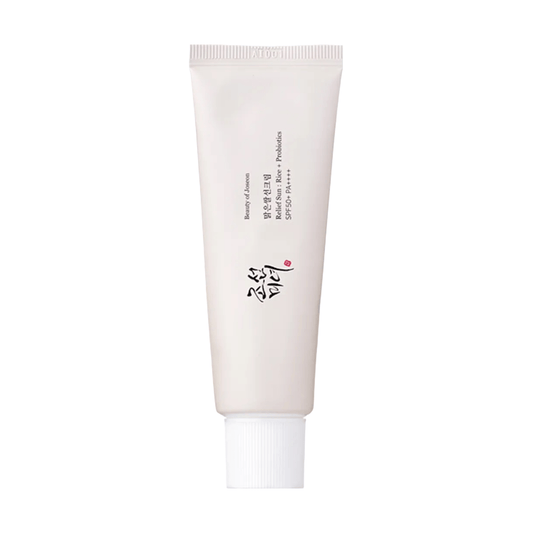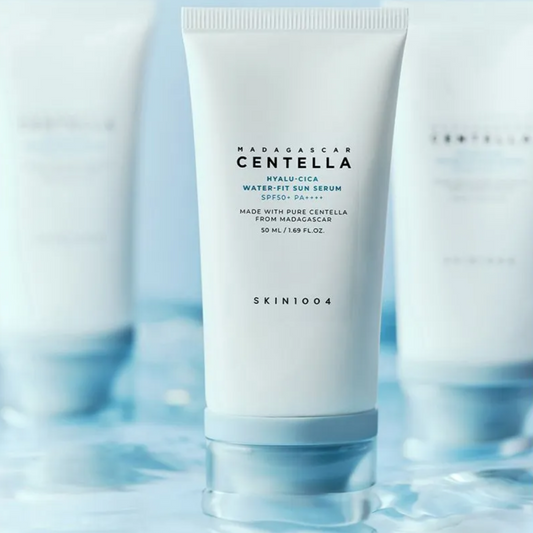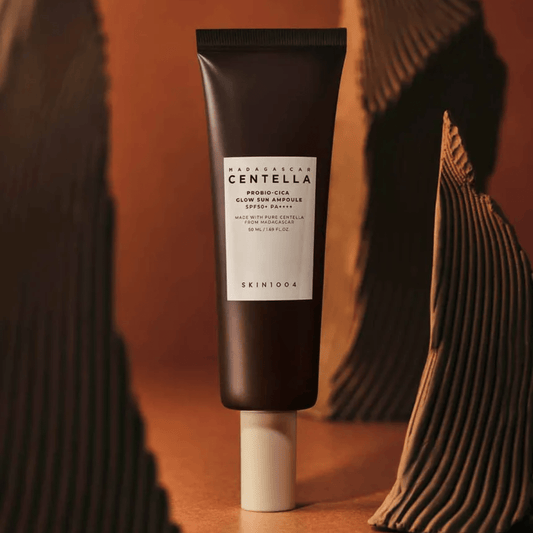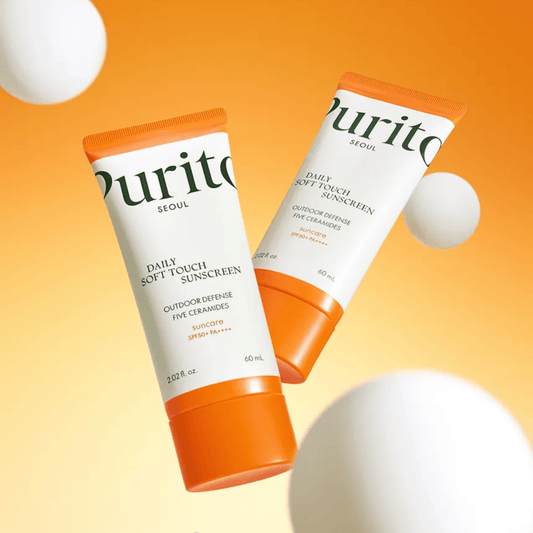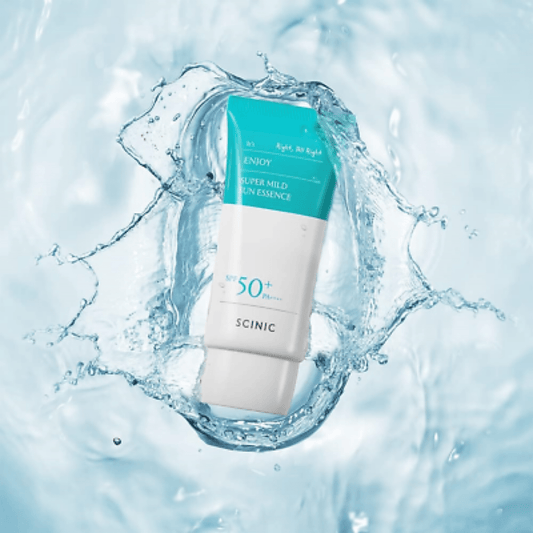Shielding Your Skin: The Chemical Sunscreen Revolution
In the realm of skincare, chemical sunscreens stand as vigilant guardians, tirelessly protecting our skin from the sun's relentless assault. Like invisible knights in shining armour, these modern marvels have been safeguarding our complexions for over half a century. As we delve into the world of chemical sunscreens, prepare to uncover the secrets behind these powerful protectors and discover how they can revolutionise your skincare routine.
The Alchemy of Protection: Defining Chemical Sunscreens
Chemical sunscreens are the alchemists of the skincare world, transforming harmful UV rays into harmless heat. These topical products contain organic compounds that act as active ingredients, absorbing ultraviolet radiation and converting it into a form that's safe for our skin. Their primary purpose? To shield us from the damaging effects of UV exposure, including sunburn, premature ageing, and the dreaded spectre of skin cancer.
Unlike their mineral counterparts, which create a physical barrier on the skin's surface, chemical sunscreens work their magic by penetrating the upper layers of the skin. This unique approach allows them to provide robust protection while maintaining a lightweight, non-chalky texture that blends seamlessly with the skin – a true boon for those seeking daily sun protection without the heavy feel.
The Guardians of Your Glow: Key Ingredients
At the heart of every chemical sunscreen lies a carefully curated blend of active ingredients, each playing a crucial role in the battle against UV damage. Let's meet these unsung heroes:
The Broad-Spectrum Defender: Avobenzone
Avobenzone stands as the vanguard against both UVA and UVB rays, offering comprehensive protection against sunburn and premature ageing. However, like any powerful ally, it comes with potential drawbacks, including the risk of skin irritation and concerns about hormone disruption.
The Multitasking Maverick: Octinoxate
Also known as Octyl methoxycinnamate, Octinoxate is a versatile warrior in the fight against UV rays. It excels in protecting against both UVA and UVB radiation, often working in tandem with other ingredients to bolster overall defence.
The UVB Specialists: Homosalate, Octisalate, and Octocrylene
This trio of ingredients focuses their efforts on combating UVB rays, the primary culprits behind sunburn and skin cancer. While they're formidable protectors, some users may experience skin sensitivity or allergic reactions.
The Controversial Guardian: Oxybenzone
Oxybenzone is a potent UVB blocker, but it's not without its controversies. Concerns about hormone disruption and environmental impact have led some to approach this ingredient with caution.
Finding Your Perfect Match: Skin Type Suitability
Chemical sunscreens are the chameleons of the skincare world, adapting to various skin types with ease. They're particularly well-suited for:
- Oily and combination skin: Thanks to their lightweight, non-greasy formulations
- Normal skin: Offering protection without disrupting the skin's natural balance
- Those with active lifestyles: Providing robust protection during outdoor activities
- Fair-skinned individuals: Offering high levels of UV protection
However, those with sensitive skin may need to tread carefully. The active ingredients in chemical sunscreens can sometimes lead to irritation or allergic reactions. If your skin is prone to sensitivity, it's wise to perform a patch test or consider mineral sunscreens as an alternative.
The Art of Application: Mastering Chemical Sunscreen Use
To harness the full power of chemical sunscreens, follow these golden rules:
- Timing is everything: Apply 15-30 minutes before sun exposure to allow the product to fully absorb
- Be generous: Use a quarter-sized amount for your face and neck, and about an ounce for your body
- Reapply regularly: Every 2 hours, or immediately after swimming or excessive sweating
- Layer wisely: Apply sunscreen before moisturisers and makeup for optimal absorption
- Don't forget often-missed spots: Ears, back of the neck, and tops of feet deserve protection too!
The Shields of Youth: Benefits and Effects
Incorporating chemical sunscreens into your daily routine is like gifting your skin a time machine. The short-term benefits are immediately apparent: reduced risk of sunburn and immediate protection against UV damage. But it's the long-term effects that truly shine:
- Reduced risk of skin cancer: By shielding against harmful UV rays
- Prevention of premature ageing: Keeping fine lines and wrinkles at bay
- Improved skin texture: Thanks to added antioxidants and anti-inflammatory properties
- Enhanced overall skin health: By protecting against daily environmental stressors
With consistent use, you can expect to see results within days, with the true magic unfolding over months and years of diligent application.
The Balancing Act: Potential Side Effects and Risks
While chemical sunscreens offer powerful protection, they're not without potential drawbacks. It's essential to be aware of possible side effects:
- Skin irritation: Some users may experience redness or itching
- Allergic reactions: Particularly in those with sensitive skin
- Hormone disruption concerns: Some studies suggest certain ingredients may affect hormone levels
- Environmental impact: Certain chemical sunscreens may harm marine ecosystems
To minimise risks, opt for sunscreens with minimal ingredients and always perform a patch test before full application. If you have concerns, consult a dermatologist for personalised advice.
Your Perfect Shield: Choosing the Right Chemical Sunscreen
Selecting the ideal chemical sunscreen is like finding the perfect dance partner – it should complement your skin's unique characteristics and lifestyle needs. Consider these factors:
- Skin type: Oily skin benefits from oil-free, non-comedogenic formulas, while dry skin thrives with added moisturising ingredients
- SPF level: Opt for at least SPF 30 for daily use, higher for extended sun exposure
- Broad-spectrum protection: Ensure your chosen product guards against both UVA and UVB rays
- Additional benefits: Look for antioxidants or anti-ageing ingredients for extra skin-loving goodness
- Texture and finish: Choose between lightweight lotions, refreshing gels, or invisible sprays based on your preference
Remember, the best sunscreen is the one you'll use consistently, so find a formula that feels like a treat for your skin!
Chemical vs. Mineral (Physical) : The Sunscreen Showdown
In the world of sun protection, chemical and mineral sunscreens stand as two mighty champions, each with its own unique strengths:
| Chemical Sunscreens | Mineral Sunscreens |
|---|---|
| Absorb into the skin | Sit on the skin's surface |
| Convert UV rays to heat | Reflect and scatter UV rays |
| Lightweight, invisible finish | Can leave a white cast |
| Ideal for daily use and makeup application | Better for sensitive skin |
While both offer effective protection, chemical sunscreens often win the popularity contest for their cosmetic elegance and ease of use in daily routines.
From Lab to Lifestyle: The Evolution of Chemical Sunscreens
The story of chemical sunscreens is one of constant innovation and improvement. Born in the 1960s, these sun-shielding heroes have undergone a remarkable transformation over the decades:
- 1960s: The birth of the first chemical UV filters
- 1970s-1980s: Introduction of broad-spectrum protection
- 1990s-2000s: Development of more stable and effective UV filters
- 2010s-Present: Focus on reef-safe formulations and improved photostability
Today's chemical sunscreens are the result of decades of research, offering superior protection and cosmetic elegance that their predecessors could only dream of.
The Perfect Ensemble: Pairing Chemical Sunscreens with Your Skincare Routine
Chemical sunscreens play well with others, making them versatile additions to any skincare regimen. Here's how to create the perfect skincare symphony:
- Cleanse → Tone → Serum → Chemical Sunscreen → Moisturiser (if needed) → Makeup
For optimal results:
- Apply chemical sunscreen before moisturiser to ensure maximum absorption
- Wait a few minutes between sunscreen and makeup application for the best finish
- Use caution when combining with retinoids or AHAs, as these can increase sun sensitivity
Remember, sunscreen is the grand finale of your morning skincare routine – the protective veil that shields all your other skincare efforts from sun damage.
Embrace the Sun, Safely: Your Journey with Chemical Sunscreens
As we conclude our exploration of chemical sunscreens, imagine a future where your skin radiates health and youthfulness, protected daily by these invisible guardians. By incorporating chemical sunscreens into your routine, you're not just applying a product – you're investing in your skin's long-term health and beauty.
Picture yourself confidently facing the day, knowing that your skin is shielded from harmful UV rays, free radicals, and premature ageing. With each application, you're not just protecting your skin; you're nurturing it, allowing its natural beauty to shine through without fear of sun damage.
We invite you to experience the transformative power of chemical sunscreens for yourself. Explore our curated selection of high-quality, skin-loving formulations and take the first step towards a brighter, more protected complexion. Your future self will thank you for the gift of healthy, radiant skin. Embrace the sun, safely – your skin deserves nothing less!

